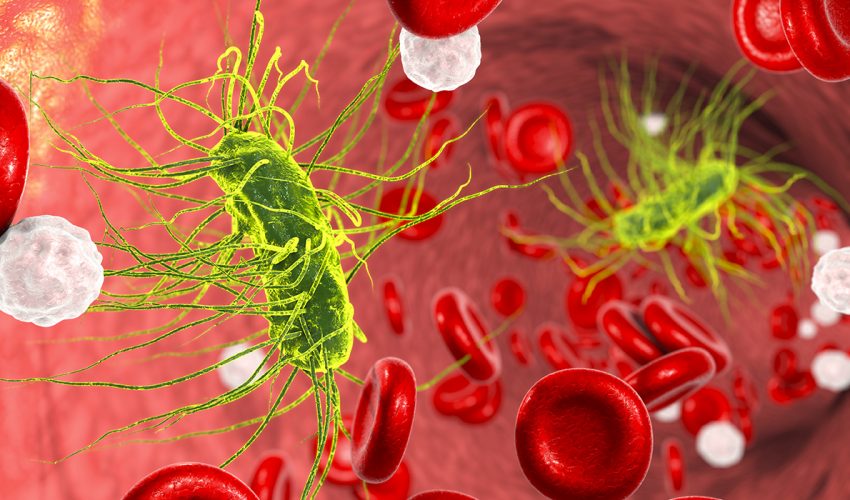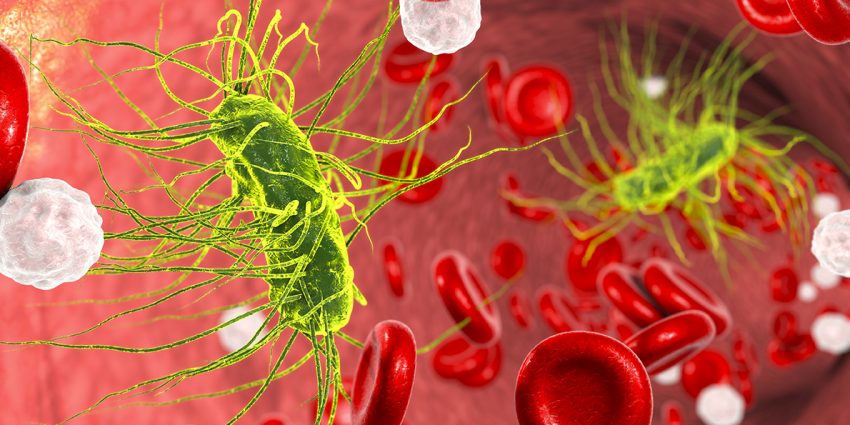Post Views: 5,171
ViewsWhat Nurses Should Know About Sepsis
By TodaysNurse
As some people might be aware already, sepsis is a life-threatening medical condition. So, how it is caused? Sepsis is the result of body’s response to an infection. While it’s true that the immune system helps protect the body from various illnesses, as well as infections, there are possibilities for it to become overactive in response to any infection. In common terms, sepsis is being referred as “blood poisoning”, which refers to the medical emergency that often becomes fatal or life-changing for the affected individuals. In the United States, sepsis is one of the top 10 death-causing diseases. The following article will speak about this medical condition in detail.
What happens during sepsis?
As mentioned earlier, sepsis or what medically called as “septicemia” is the result of a serious overdrive of the body’s immune system in response to an infection. During sepsis or immune overdrive, there will be numerous bacteria in the bloodstream, which causes the immune system to be overactive. This overdrive of the immune system will make the body to respond in such a way that there could be some organ dysfunction. In other cases, there will be a breakdown of blood circulation, which is referred to as “septic shock”. In some other cases, depression of the heart, elevated metabolic rates, or abnormalities in organ functions also can be noted. Thus, sepsis is not a condition that is to be thought as infection alone.
What is the status of sepsis?
As per the estimates from the “Surviving Sepsis Campaign”, 3 in 1000 people are affected by sepsis globally. Moreover, the number of cases of sepsis is found to be increasing steadily from year to year. Annually, over 18 million cases are reported worldwide. Thus, sepsis is found to be a major cause of mortality all over the world. In the United States, an average of 36 people is found to die each hour due to sepsis. Annually, more than 1.16 million people are found to be affected by the condition.
Who are at risk for sepsis?
Literally, sepsis can affect anyone with an infection that gives rise to a complication. But, there are few people who are at higher risk for contracting sepsis. They are as follows:
- Young children
- Elderly population
- People with weakened immune system
- People with chronic illnesses (diabetes, diseases of kidney/liver, AIDS, cancer…)
- People with Severe wounds
- People with burns
- People in intensive care units
- People with devices (IV catheters, respiratory tubes…)
- People with trauma
Are there any Symptoms for Sepsis?
Rather than learning the symptoms of sepsis as a whole, it will be good to learn the symptoms for each stage of sepsis. As such, there are three stages in sepsis infection. Know the stages and the symptoms for each stage below:
- Sepsis:
The symptoms of sepsis are as follows:
- Fever (>101 degrees F or <96.8 degrees F)
- Higher heart rates (>90 beats per min)
- Higher breathing rate (>20 breaths per min)
- Suspected/confirmed infection
If an individual is seen with two or more of the above symptoms, he/she is most likely to have sepsis.
- Severe Sepsis:
A person is said to have severe sepsis when he/she is experiencing an organ failure. The symptoms of severe sepsis are as follows:
- Discoloration in skin or patches of discoloration
- Decreased amounts of urine
- Changes in mental abilities
- Decrease in the blood platelet count
- Problems in breathing
- Atypical heart functions
- Chills
- Unconsciousness
- Weakness
- Septic Shock:
The symptoms of septic shock would involve all the above symptoms along with a low blood pressure.
How to diagnose sepsis?
More usually, the first step that is involved in the diagnosis of sepsis will be to observe the symptoms. During the observation of the symptoms, the doctors are more likely to consider the other factors like the medical history of the patient. This way, they will be alerted to probable sepsis if there has been any recent infection or a surgical procedure. Alternatively, the doctor will also examine whether the patient is particularly susceptible to infection due to weakened immune system. Thereafter, the infection will be confirmed through physical examination.
In the process of diagnosis, blood tests will be carried out to test for the agent causing the infection. In addition, other bodily fluids like sputum will also be tested if required. In some cases, imaging tests will also be done for locating the infection.
How is it treated?
As in other bacterial infections, the major treatment for sepsis would involve the antibiotics. It’s the doctors who are to prescribe the best antibiotics depending upon the type of infection. In any case, the prescription and treatment should be fast as the disease is fatal if left untreated.
While in some cases, antibiotics alone may be enough, in the serious cases, treatment in an intensive care unit is needed. In such cases, the use of intravenous fluids, vasopressors, central lines, and other means of organ supports may be required.
2 comments on What Nurses Should Know About Sepsis
Leave a Reply
What Nurses Should Know About Sepsis
By nurseadvisorofficial
In the United States, sepsis is one of the top 10 death-causing diseases. The following article will speak about this medical condition in detail.














Informative article..thank you .
BE CAREFUL of crypto platforms promising huge returns. They lure people into fake programs. I lost 198,450 USD last year. While researching on how to recover my funds, I came across several recommendations on the Bitcoin Abuse Forum about HACKERSTEVE. I contacted him via his email on hackersteve911@gmail.com | https//hackersteve.great-site.net/, and he helped me recover all my funds. If you’ve also been a victim of financial scams, don’t hesitate to get in touch with him.